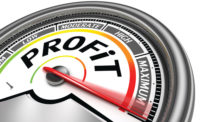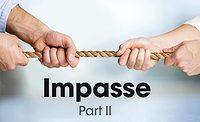If Hurricane Matthew would have taken a more westerly track by just 30 or 40 miles it probably would have been the largest natural catastrophe the East Coast has seen since Hurricane Andrew in 1992. Instead, it hugged the coast, still creating damage but not to the magnitude anticipated by restorers and equipment rental companies who headed to the area well in advance of the storm. This left more than a few opportunistic folks scratching their heads and looking for work to offset their mobilization costs.
We see this happen time and time again. Enthusiastic restorers, looking to capitalize on the prospect of millions of dollars in mitigation work, pack up semi trucks with equipment, abandon their home markets, and drive hundreds of miles on a wing and a prayer. Some score, but sadly, most do not.
I am asked about performing catastrophe work almost weekly by clients and professional acquaintances in the industry. Those who know me well, or with whom I have had that discussion, can cite my response: If you aren’t invited to the party, don’t go. Why? Because the worst thing that could happen to you is right in your own backyard. You see, it’s generally not about getting work. That’s not the issue. It’s not even about getting paid—at least it’s not as long as you’re willing to wait six to nine months for your money. It’s about opportunity cost. The cost of losing opportunities in your home market because your resources are tied up on a “tour of duty.”
Don’t let me give you the wrong impression. There is plenty of money to be made performing CAT work, and it can be honorable and rewarding. In a lot of ways, I even envy those who possess the systems and discipline necessary to do it effectively. However, there is an issue larger than being addicted to watching our favorite Weather Channel host standing on a beach with goggles on. And that issue is the difference between a risk and a gamble.
“You’ve got to know when to hold ‘em. / Know when to fold ‘em” are the lyrics most remembered from Kenny Roger’s iconic song “The Gambler.” As someone who has never placed a dollar on a poker table, those words don’t resonate with me. However, these words do: “’Cause every hand’s a winner. / And every hand’s a loser.”
Both risk taking and gambling involve taking action based on an expected outcome. The major difference between the two is how decision makers view the probability of success. Views on risk are based on information, whereas a gamble is based on emotion. This is important to distinguish, because any given situation has the possibility of a positive outcome, as Kenny so ingenuously points out. Risk takers use available information to help them make decisions. Gamblers make decisions based on the feeling associated with the situation.
The problem with gambling is the fallout. Gamblers will take all the credit for winning but blame everything and everyone but themselves for losing. This leads to irrational behavior such as throwing their winnings back on the table, believing they can make more, or worse yet, scrambling to pay the debts of their losses.
Knowing all of this, it is easy to understand why gambling is addictive—especially in business. When you play with the company’s assets there is less of a personal connection to success and failure. There is an audience to applaud when you win and a scapegoat in every office when you lose. This feeds addictive highs and lows associated with the behavior. It is self-enabling, but ultimately detrimental to all who are involved. Hence the fallout. Some employees emulate the behavior of leadership, causing even more damage. Good employees recognize the addiction and leave.
Taking risks in business is necessary, as long as they are calculated in nature and consistent with an expected return on investment. We see this every day in the restoration industry. Contractors sign agreements and perform work for homeowners who, for the most part, do not have the funds available to pay for the services provided. They take this risk under the assumption that funds will be available through the benefits of an insurance policy. Sometimes they get burned by a lack of coverage, limited coverage, or a host of other situations. But those are the exceptions, not the norm. Consequently, they continue to take the risk because it is calculated and the potential upside is greater than the potential downside.
Taking a calculated risk is possible through the availability and processing of information. Specifically, the best information available at the time of the decision. Colin Powell was famous for what he called the 40-70 rule. It states that you shouldn’t take action (make a decision) until you have at least 40 percent of the information available to be certain of a positive outcome. But, you should not waste time trying to get more than 70 percent of the information, because by then it will be too late.
Powell’s philosophy plays out very well with our example. Restorers don’t blindly work for just anyone who has property damage. They put mechanisms in place to mitigate the negative consequences associated with the risk. They ask pre-qualifying questions when customers call to request service. They place proactive calls to insurance carriers to verify coverage. They check to make sure the source of the loss is a typically named peril. And so on. Once the information processed is between 40 percent and 70 percent of what is available, they make a decision about whether to proceed with the project.
Restorers taking risks in this manner are better prepared and have a higher degree of success than their counterparts acting on a gamble. So what part does business instinct and gut feeling play? One could certainly make a case for the entrepreneurial spirit and how it led the greats like Carnegie, Rockefeller, and Westinghouse to spur invention, create vertical markets, and build wealth. And this true. But did they gamble or did they take calculated risks based on the best available information? I would venture to say if they were asked to invest in steel, gas and oil, or electricity today, you would get more questions from them than answers. That’s because there is no substitute for proper due diligence when it comes to making good decisions.
This is certainly not meant to be a condemnation of those who chase storms. Heck, I still get excited when tornado or hurricane season rolls around! It may be a twisted way of looking at the world, but that’s the business we are in. Restorers get to make money by helping people. It’s a stable and well-funded industry and really a pretty good deal when you stop and think about it. The key to being successful consistently, however, is taking the time to stop and think before you act.
If you flip a coin you have a 50 percent chance of being right. No matter how many times you flip that coin, you still have a 50 percent chance of being right. Most would think this is a gamble and the same as doubling down on the next card at the blackjack table or packing up your trucks to head after the next storm. But it’s not. Flipping a coin is actually a calculated risk, because mathematical statistics prove there is equal opportunity for success and failure. It becomes a gamble when the decision maker ignores that fact and proceeds to play because they have convinced themselves the laws of probability and statistics do not apply to them. And, the cost of losing exactly half the time is worth the feeling (benefit) they get from taking the chance.
Every hand’s a winner and every hand’s a loser. Every catastrophic event, project, service line, product or equipment has the opportunity for success in the restoration industry. However, the probabilities are not the same. Before you make your next business decision, exercise proper due diligence, process the information at hand, and become comfortable with it. Mitigate any negative influences on the outcome and make sure you have a better than average chance of being right. Then, let instinct be your guide, and go with your gut.






Report Abusive Comment